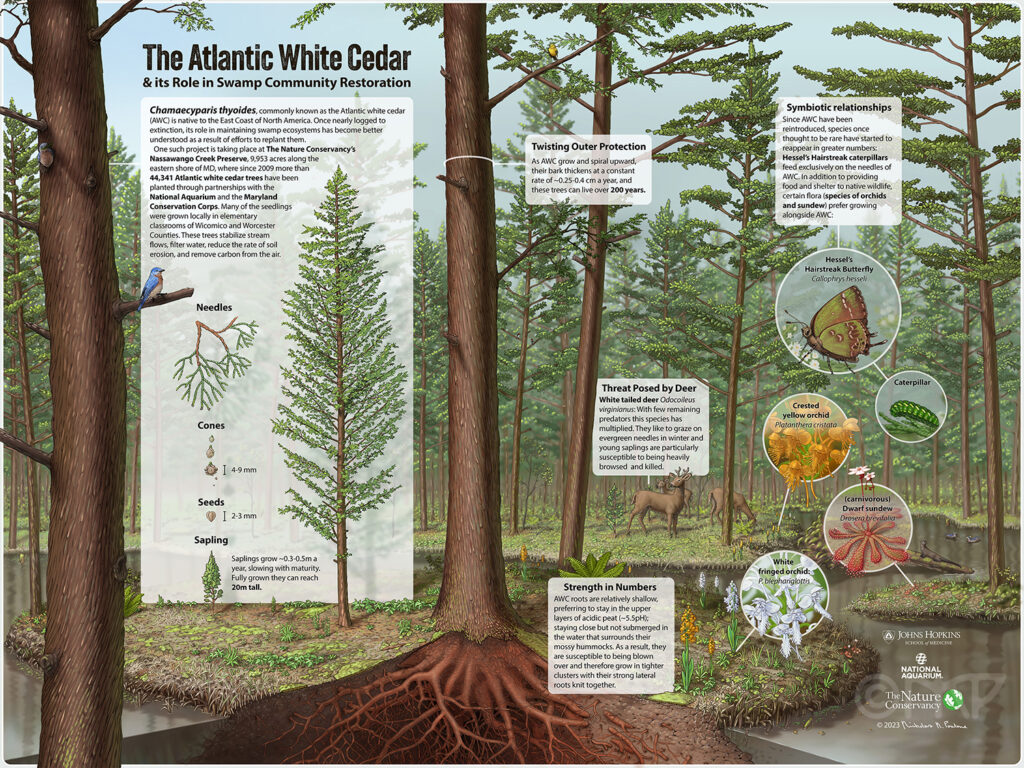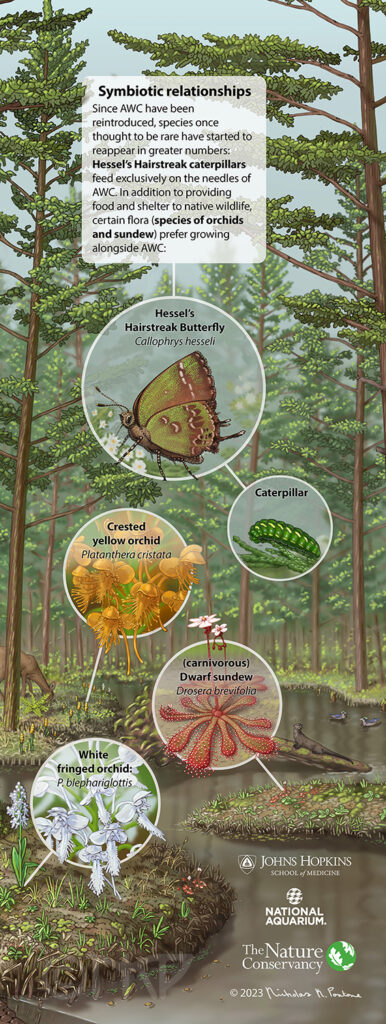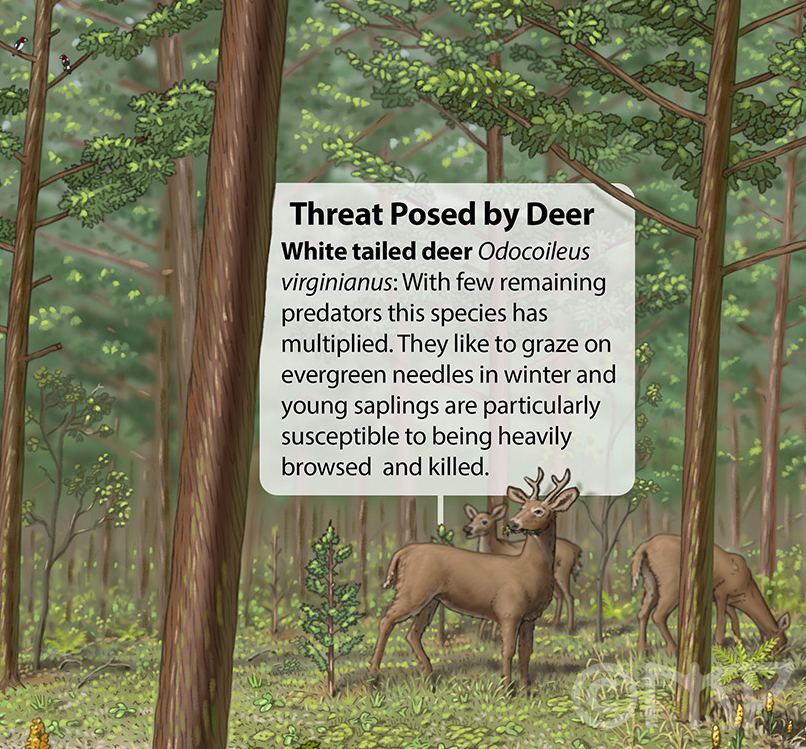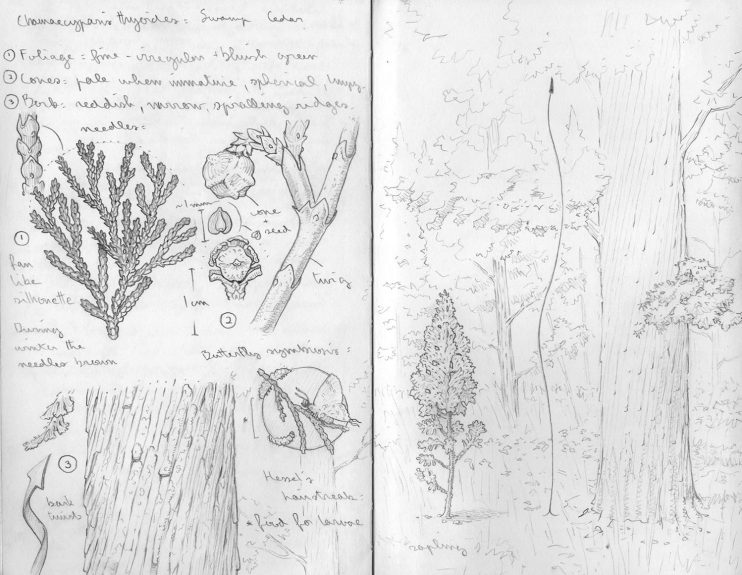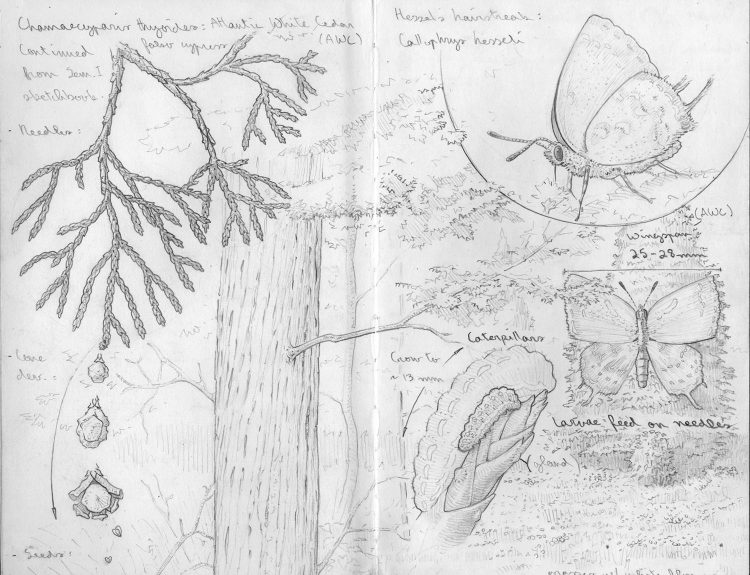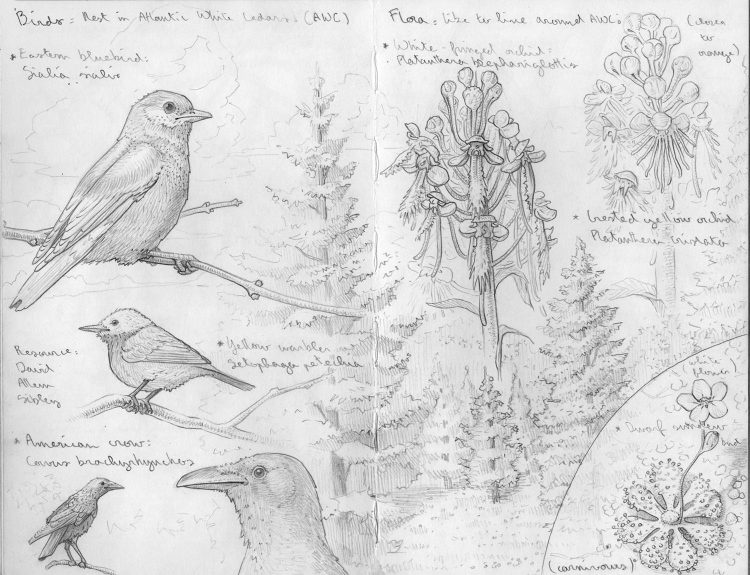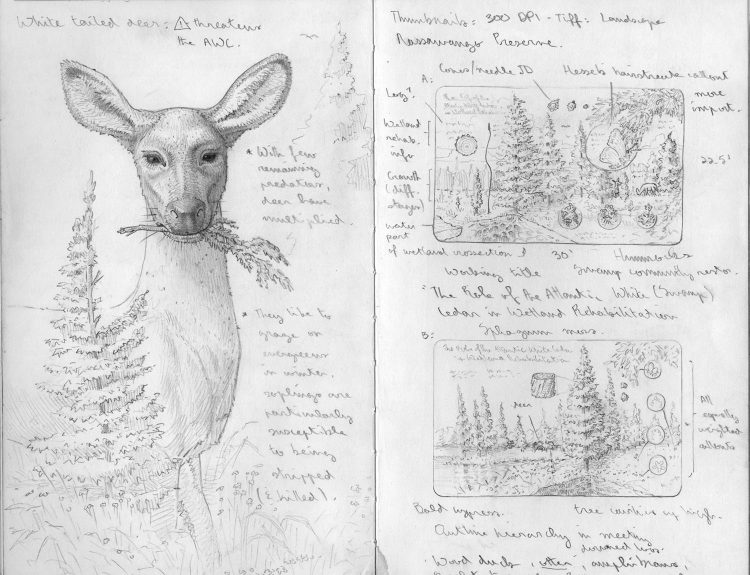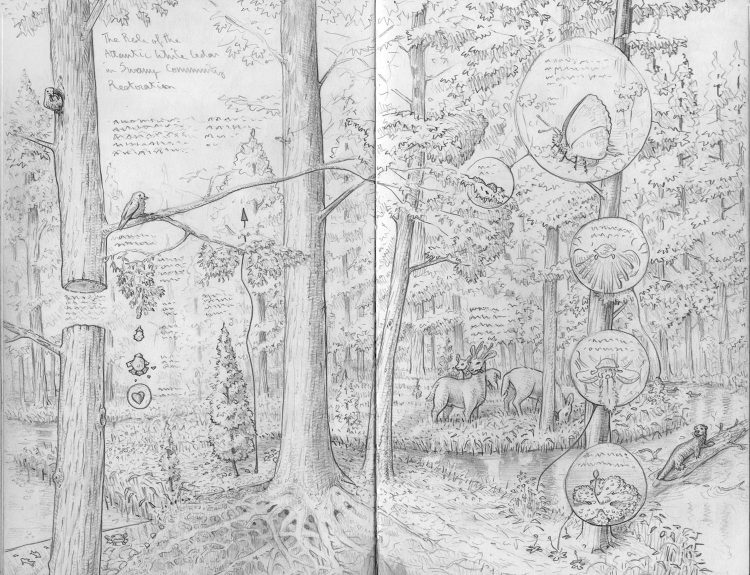Click any image to enlarge
This large format poster, was designed for a public audience to support replanting efforts by the Maryland Nature Conservancy of the native tree Chamaecyparis thyoides, commonly known as Atlantic White Cedar (AWC). This wetland rehabilitation effort was conducted in partnership with the National Aquarium and local elementary schools at Nassawango creek preserve and other wildlife refuges in the mid-Atlantic region.
Once native to these wetlands, then logged to near extinction, their reintroduction to the area has helped bolster the ecosystem. I wanted to create an immersive world where subjects of interest are highlighted. Set within a landscape that reflects the swampy hummocks characteristic of the environment at Nassawango park, the left side of the poster illustrates the AWC at various ages in its natural environment, and some of its identifying biology.
The right-hand side focuses on the symbiotic relationships AWC has with other native species. Through these restoration efforts, species of flora and fauna once thought to have left the area are now returning in greater numbers. One species of butterfly in particular: Hessel’s hairstreak, relies exclusively on AWC needles as a food source in their caterpillar stage.
I was inspired by Sibley’s Guide to Trees and various magical realism painters and illustrators. All of which is meant to get both children and adults excited about replanting these trees.
Below are sketches and thumbnails

